Darya-i-Nur Pink Diamond
Open FREE Unlimited Store Join Our Newsletter
Origin of name
Darya-i-Nur in the Persian Language means "Sea of Light" or "Ocean of Light" (Darya-sea or ocean, Nur-light). The name was probably given by the Persians after it was plundered from India, by Nadir Shah, together with other valuables, which included the Koh-i-Nur (Mountain of Light) and the Nur-ul-Ain (Light of the Eye), and the jewel-studded pea-cock throne of Shah Jahaan.

Nadir Shah Afshar - the 18th-century Persian Conqueror
In fact the name "Koh-i-Nur" is also attributed to Nadir Shah, who exclaimed Koh-i-Nur !!! unable to hide his amazement when he saw the diamond for the first time. The name used for the Koh-i-Nur by the Mogul Emperors is not known, but historians usually refer to the diamond as "Babur Diamond" which is believed to be the same diamond that Emperor Babur referred to in his memoirs, the "Baburnama".
Characteristics of the diamond
The 4Cs of the diamond
The Darya-i-Nur diamond is a pale pink, table-cut diamond (also known as Lasque), with an estimated weight of around 186 carats, according to the GIA, and having dimensions of 41.40 x 29.50 x 12.15 mm. The exact weight of the Darya-i-Nur cannot be determined, as it is not possible to dismantle the diamond from its present mid-19th-century setting, without damaging it . Hence, the weight of 186 carats is perhaps only an estimation by experts, based on its dimensions and density. Some experts have estimated the weight of the stone to lie within the range of 175 to 195 carats. However, Edwin Streeter in his book, "The Great Diamonds of the World" first published in May 1882, states that "the Darya-i-Nur is a magnificent stone of the purest water, and almost matchless lustre, fully deserving the proud title of "Sea or River of Light," by which it has always been known in Persia, and weighs 186 carats, which strange to say, was the exact weight of the "Koh-i-Nur" before that famous gem was re-cut in London." Hence, according to Edwin Streeter, the weight of the "Darya-i-Nur is exactly 186 carats, which he confirms by comparing it with the original weight of the "Koh-i-Nur," which coincidentally too was 186 carats.
The clarity of the stone is not known, but being a
Golconda diamond it's clarity must be exceptional, which Streeter
describes as a magnificent stone of the purest water and almost
matchless lustre. The diamond appears to be completely pure, with
an exceptional limpidity, characteristic of the finest Golconda
diamonds. Sir John Malcolm, who visited Persia in the early
19th-century, and was afforded the rare privilege of inspecting
the Iranian Crown Regalia, states in his 1827- publication, "Sketches of Asia" that "the king, at this visit, appeared
in great good humour with the Elchi, and gratified the latter by
showing him his richest jewels, amongst which was the "Sea of
Light," which is deemed one of the purest and most valuable
diamonds in the world. Many of the others are surprisingly
splendid. The "Darya-i-Nur" or "Sea of Light" weighs 186 carats,
and is considered to be the diamond of the finest lustre in the
world. The "Taj-e-Mah" or "Crown of the Moon," is also a
splendid diamond. It weighs 146 carats. These two are the
principal diamonds in a pair of bracelets, valued at nearly a
million sterling. Those in the crown are also of extraordinary
size and value."
By the above account, Sir John Malcolm, not only confirms that the weight of the stone is 186 carats, but also vouchsafed to its clarity, by referring to the stone in superlatives, as a purest diamond with the finest lustre in the world.
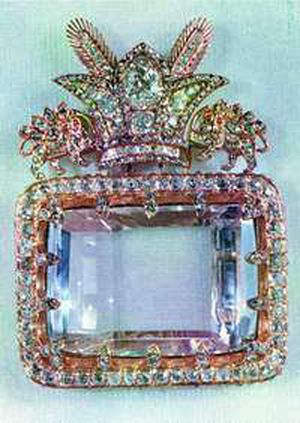
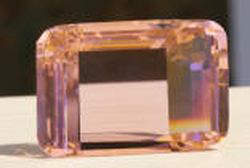
Replica of Darya-i-Nur diamond designed by Scott Sucher based on exhaustive research of historical records
The Darya-i-Nur diamond is an extremely rare plastically deformed Type IIa diamond
The Darya-i-Nur being a rare pink diamond, is most probably a Type IIa diamond, which are nitrogen-free or contain undetectable quantities of nitrogen. Type IIa diamonds can be divided into three categories :-
1) Structurally perfect 2) Structurally imperfect 3) Naturally irradiated
1) Structurally perfect - These diamonds are chemically pure and have perfectly formed crystals. The diamonds are absolutely colorless. The D-F color grades which stand for colorless diamonds in the G. I. A. color grading system, may fall under this group. 1-2 % of all natural diamonds belong to this group.
2) Structurally imperfect - These diamonds are chemically pure, but their crystals are not perfect. The crystals have undergone plastic deformation due to the twisting and bending of the tetrahedral crystal units, either during their formation in the earth's mantle or subsequent rise to the earth's surface. The deformed areas in the crystal change the absorption spectrum of the diamond, causing rare fancy colors such as pink, red, purple and also brown color. These diamonds constitute less than 0.1 % of all naturally occurring diamonds.
3) Naturally irradiated - These diamonds have been exposed to natural radiation such as alpha, beta and gamma radiation, emanating from naturally radioactive sources such as uranium compounds, over a long period of time. The distortion of the crystal lattice caused by radioactive shock, gives the diamond a green color. Their occurrence is less than 0.1 % of all natural diamonds.
Thus the Darya-i-Nur diamond is a plastically deformed Type IIa diamond.

French traveller and jeweler Jean-Baptiste Tavernier
Canadian experts research that pointed to the common origin of the two pink diamonds Darya-i-Nur and Nur-ul-Ain from the Great Table Diamond described by Tavernier in Chapter XXII of his book Travels in India
The French traveler and jeweler Jean Baptiste Tavernier, who had made up to six trips to India in the 17th century, had during one of his trips visited Golconda in Southern India, in 1642, and had the opportunity of seeing a very rare, pale pink, enormous diamond weighing 242 carats, which he referred to as "Diamanta Grande Table", the "Great Table Diamond." The stone is believed to have subsequently entered Shah Jahan's court, and perhaps was studded in the peacock throne of the great Mogul Emperor. It is believed that the "Great Table Diamond" was subsequently cleaved, intentionally or by accident, into two unequal portions. The major portion of this diamond was transformed into the Darya-i-Nur and the lesser portion became the Nur-ul-Ain. A team of Canadian experts who conducted research on the Iranian Imperial Jewels in 1965, concluded that the table-cut, "Darya-i-Nur" is the major portion of the "Great Table Diamond," seen by Tavernier in 1642, and the 60-carat, oval pink brilliant, the "Nur-ul-Ain" is the lesser portion of the same diamond.

The elaborate setting of the Darya-i-Nur diamond executed during the reign of Shah Nasser-ed-Din
The two diamonds the Darya-i-Nur and the Nur-ul-Ain are two of the most celebrated diamonds among the Iranian Crown jewels. The Darya-i-Nur is mounted on an elaborate frame, set with 457 smaller diamonds and 4 rubies, surmounted by the lion and sun symbols, signifying the Aryan origins of the Iranian people, a unique setting that was designed and executed during the reign of Shah Nasser-ed-Din, (1848-1896). Fath Ali Shah who ruled between 1797 and 1834, got his name engraved on one facet of the diamond. The Persian inscription reads "The Sultan, Lord of the Conjunction, Fath Ali, the Qajar, A.D.1834." It appears that Fath Ali Shah had got his name inscribed on the diamond, just before he died in 1834.
The Nur-ul Ain adorns the tiara designed by Harry Winston for Empress Farah Diba's wedding to Muhammad Reza Shah Pahlavi, the last Shah of Iran, in 1958.

Elaborate setting of the Darya-i-Nur diamond with the Persian inscription dated 1834 A.D.

Fath Ali Shah (1797-1834), whose name is inscribed on the Darya-i-Nur

Empress Farah's Tiara set with the Nur-ul-Ain diamond
The Darya-i-Nur diamond with a 17th-century origin not only remains one of the oldest pink diamonds in the world but also the largest pink diamond ever discovered
The Darya-i-Nur and Nur-ul-Ain diamonds believed to have been derived from the "Diamanta Grand Table" are the 1st and 2nd largest diamonds in the list of famous pink diamonds of the world, ever since the two diamonds were created in the early 1800s. The two historic diamonds continue to maintain this position up-to-date. Given the fact that the tendency in nature is for pink diamonds to exist as small diamonds, usually less than 1-carat in weight, and rarely 1-50 carats or more in weight, it is doubtful whether a diamond would ever appear again, to challenge the coveted position occupied by the Darya-i-Nur diamond. The 59.60-carat Steinmetz Pink diamond occupies a close 3rd-position after the 60.0-carat Nur-ul-Ain diamond. The occurrence of a pink diamond in the range of 1-50 carats or more is an extremely rare occurrence in nature. This explains the enhanced prices fetched by pink diamonds at recent public auctions, with the 24.78-carat Graff Pink diamond registering a world record price of US$ 45.6 million in 2010, the most expensive diamond ever sold at an auction.
List of Famous Pink Diamonds as at year 2011
| S/No | Name |
Carat Weight |
Value / Price realized at Auctions (USD) |
Color |
| 1 | Darya-i-Nur | 186 | Part of the Iranian Crown Jewels | light pink |
| 2 | Nur-ul-Ain | 60 | Part of the Iranian Crown Jewels | light pink |
| 3 | Steinmetz pink | 59.60 | Estimated 100 million | fancy vivid pink |
| 4 | Shah Jahaan | 56.71 | light pink | |
| 5 | Agra | 32.34 | 4 million sterling pounds in 1990 (about 6 milion USD) | fancy light pink |
| 6 | Pink Sunrise | 29.79 | fancy pink | |
| 7 | Rose of Dubai | 25.02 | 6 million in 2005 | fancy pink |
| 8 | Graff Pink before and after recutting | 24.78 23.88 | 45.6 million 2010 | fancy intense pink, after recutting fancy vivid pink |
| 9 | Mouawad Lilac | 24.44 | 1.1 million in 1976 Estimated 20 million in 2007 | fancy purplish pink |
| 10 | Williamson | 23.56 | Wedding Gift to Queen Elizabeth | fancy pink |
| 11 | Graff Pink Orchid | 22.84 | fancy purplish pink | |
| 12 | Mouawad Pink | 21.06 | fancy pink | |
| 13 | Hortensia | 20.00 | light orange pink | |
| 14 | 1994 Christie's Geneva Auction | 19.66 | 7.4 million in 1994 | fancy pink |
| 15 | Perfect Pink | 14.23 | 23.2 million in 2010 | fancy intense pink |
| 16 | May 2011, Sotheby's Geneva Auction | 10.99 | 10.8 million in 2011 | fancy intense pink |
| 17 | Graff Pink Supreme | 10.83 | fancy pink | |
| 18 | Argyle Pink Diamond | 10.11 | Canadian Dollar 8-12 million | fancy intense orangish-pink |
| 19 | April 2011 Christie's New York Auction | 10.09 | Unsold - Estimated 12-15 million | fancy vivid purplish-pink |
| 20 | Conde Pink Diamond/Le Grand Conde Diamond | 9.01 | Displayed at the Conde Museum, Chantilly, France | light pink |
| 21 | 1995 Sotheby's Auction | 7.37 | 6.0 million in 1995 | fancy intense purplish-pink |
| 22 | Christie's New York, Dec.2010 | 6.89 | 6.9 million in 2010 | fancy vivid purplish-pink |
| 23 | The Vivid Pink | 5.00 | 10.8 million 2009 | fancy vivid pink |
©internetstones.com
Please
do not copy our tables without our permission. We may be
compelled to inform the search engines if our content and tables
are plagiarised.
Discovery of the 242-carat "Diamanta Grande Table" a record-breaking historical event
An examination of the above table shows that except for the Darya-i-Nur, all other pink diamonds are less than 100 carats in weight. This is the normal trend in nature. Fancy colored diamonds such as pink, red, blue, purple, green and orange, all have a restricted size in nature. In fact, most of the fancy colored diamonds produced in the Argyle Mines in Western Australia, which is the only consistent source of pink and red diamonds in the world today, have an average size of only one carat. To have an enormous fancy colored diamond of more than 100 carats in weight is an extremely rare event. Therefore, the discovery of the 'Diamanta Grande Table" with a weight of around 242 old-carats in the mid-17th century in the Golconda mines in Southern India, was truly an extremely rare, historical event, a feat that has not been repeated in any part of the world up-to-date. The chances are that this record-breaking discovery may not be repeated again in the future.
History
Early history of the diamond
What Tavernier says about the Great Table Diamond in his book "Travels in India" - Vol 2, Chapter XXII, Page 98, translated by Valentine Ball ?
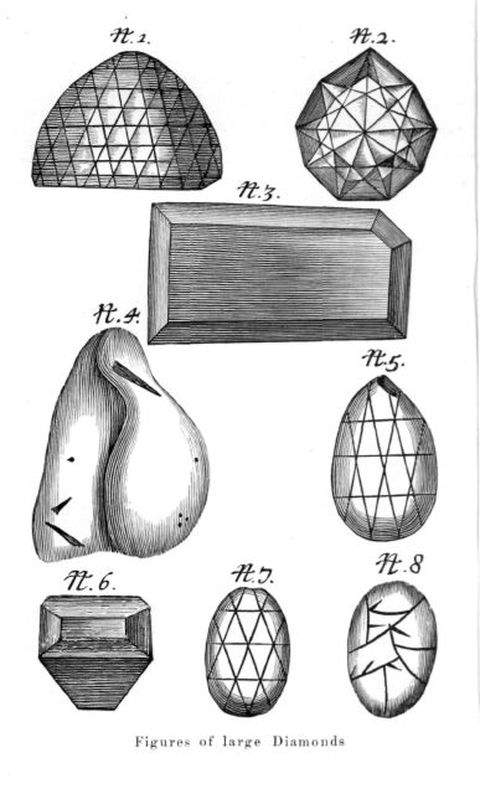
Fig.1 - the Great Mogul Diamond
Fig.2 - the Florentine Diamond (Grand Duke of Tuscany's diamond)
Fig.3 - the Grand Table Diamond
Fig.4 - the Ahmedabad Rough Diamond
Fig.5 - the Ahmedabad Diamond after cutting
Fig.6 - An unnamed 63.4-carat old-Indian cut diamond purchased by Tavernier at Kollur in the year 1653.
Fig.7 & 8 - Sketches of two halves of a cleaved stone, with flaws and impurities, which originally weighed 104 carats, purchased by a Dutchman, who took the risk of cleaving the stone into several pieces, eliminating all impurities, but yet could not break-even at the end of the day.
In this Chapter, Tavernier deals with some of the largest and finest diamonds and rubies seen by him in Europe and Asia, accompanied by sketches. At the beginning of this Chapter, he gives details of the sketches of six large diamonds, he had made, during this trip. Four of these diamonds are faceted; one diamond is represented both before and after faceting; and the remaining two sketches represent two halves of the same rough diamond after cleaving. The sketches are numbered and in describing them he follows the order in which they are numbered.Sketch 3 represents the "Diamanta Grand Table" - the Great Table Diamond.This is what Tavernier has to say about this diamond :-
The
fate of the "Diamanta Grand Table" after it first appeared in
Golconda in 1642 ?
Tavernier is invited as special guest of honour for Aurangzeb's annual birthday celebrations, and during his two months stay in the Mughal court inspects the renowned Peacock Throne and the Mughal Crown Jewels
"The Diamanta Grand Table" was in the possession of merchants, when Tavernier first saw it in Golconda in the year 1642. Since then Tavernier had not reported seeing the diamond again in India, up to the time of his final departure from India, after his sixth voyage, from the port-city of Surat, on the west coast of India, in February 1667. During his sixth and last voyage to India that lasted from 1663 to 1668, Tavernier had the rare privilege and honor of being Emperor Aurangzeb's guest for two months from September 12,1665 to November 11, 1665, during which period he also attended the Emperor's annual birthday celebrations as a special invitee. Tavernier made use of this opportunity to inspect the jewel-studded thrones in the palace, including the principal throne, known as the Takht-e-T?'?s (Peacock Throne). He was also given the opportunity to inspect the valuable jewels belonging to the Emperor, excluding of course the jewels still held by his father Shah Jah?n, whose throne he usurped, and who was still held in detention in Agra. In fact, it was just a few months after Tavernier inspected Aurangzeb's jewels, that Shah Jah?n died in detention, in January 1666, and Aurangzeb was able to claim all his jewels.
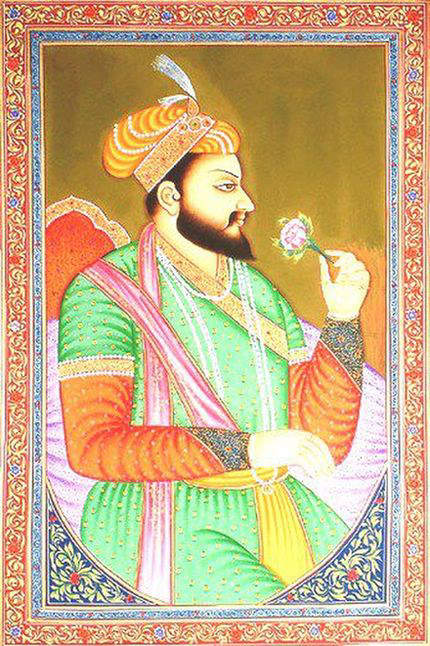
Portrait of Shah Jahan - Mughal emperor from 1628-1658
Nowhere in the detailed account of the Peacock Throne does Tavernier mention about the "Diamanta Grande Table" being mounted on the throne. In fact his account does not mention of any famous diamonds being mounted on the throne
Tavernier's
account of the Peacock Throne is the most comprehensive account
of the throne available to modern historians. In the detailed
account of the Peacock Throne, appearing in Chapter VIII,
Vol. II of his book, "The Six Voyages of J.B. Tavernier,
translated by Dr. Valentine Ball in 1889, nowhere has it been
mentioned that the large pink diamond, the "Diamanta Grand
Table" was studded on the Peacock Throne. If it was so studded,
Tavernier would not have failed to notice it, and would have
undoubtedly reported it, especially as he had seen the diamond
before, at Golconda in 1642. In fact, Tavernier does not report
the incorporation of any other famous diamonds on the throne.
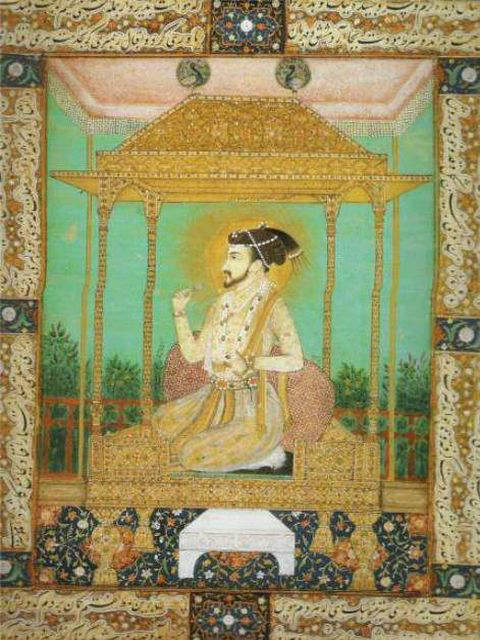
Account of the Peacock
Throne by Shah Jahan's court chronicler written between 1635
and 1658, mentions about some famous diamonds decorating the
Peacock Throne, but here too no mention is made about the
"Diamanta Grand Table."
However,
an account written by the court chronicler at the time Shah
Jahan was the ruling emperor (1628 to 1658), mentions
several historical diamonds that decorated the Peacock Throne,
such as the 186 carat Koh-i-Noor diamond, the 95-carat Akbar
Shah diamond, the 88.77-carat Shah diamond and the 83-carat
Jehangir diamond, apart from the 352.50-carat Timur Ruby, the
3rd largest balas ruby in the world. The reason for this
apparent contradiction in the two accounts of the Peacock
Throne, is because at the time Tavernier inspected the Peacock
Throne in 1665, most of the famous diamonds and gemstones in the
Mughal treasury were in the custody of Shah Jahan, who was
placed under house arrest by his son and successor, Aurangzeb,
at the Red Fort in Agra. In fact, it was just
two months after Tavernier left Jahanabad and had reached
Bengal, during his sixth and last voyage to India, that Shah
Jah?n died in detention, on January 22, 1666, and Aurangzeb
was able to claim all these diamonds and gemstones. Thus, it
was not possible for these historical diamonds and gemstones
to appear on the throne, at the time Tavernier inspected it.
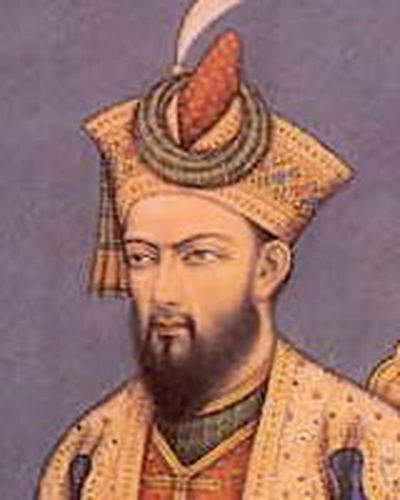
Aurangzeb - Last of the great Mughal emperors of the Mughal classic period
Both
Tavernier's account and Shah Jahan's court chronicler's
account agree on the fact that the "Diamanta Grand Table"
was never mounted on the Peacock Throne
In any event, both Tavernier's
account and the court chronicler's account of the Peacock
Throne, seem to agree on one important point, viz. that the
large pink diamond, "The Diamanta Grand Table" was never a
part of the Peacock Throne, nor was it ever studded or
incorporated on it, as reported by some authorities.
However, this does not preclude the possibility that the
enormous "Diamanta Grand Table" was held as a loose
stone in the Mughal treasury, and this too was perhaps
held by Shah Jahan in the Red Fort before it came into the
possession of his son and successor, Aurangzeb in January
1666. This explains why Tavernier did not see the "Diamanta
Grand Table" among the Mughal jewelry collection when he was
given the opportunity to examine them on November 10,
1665.

The
Great Table Diamond is sighted again only 149 years later
after its first appearance in 1642, by Sir Harford Brydges
in Shiraz, the capital of Zand territory in Iran in 1791
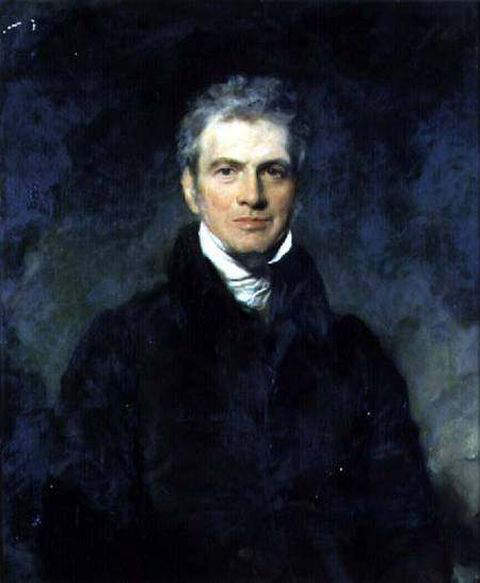
Significant historical facts that emerge after the positive identification of the "Great Table Diamond" among the treasures of Lotf Ali Khan, by Sir Harford Brydges
Given
the fact that Sir Harford Brydges positively identified the
Great Table Diamond among the treasures of Lotf Ali Khan in
1791, two significant historical facts emerge from
this identification. Viz. :- 1) The Great Table
Diamond reached Iran in its original form in one piece
contrary to the commonly accepted belief and expounded by
recognized authorities on famous diamonds, who postulated
that the historic diamond was already split up into two
diamonds, the Darya-i-Nur and Nur-ul-Ain, when it became
part of the loot of Nadir Shah in 1739. 2) The Great Table
Diamond was part of the valuable treasures of Nadir Shah
that fell into the hands of Muhammad
Karim Khan Zand, commander of the Zand dynastic unit in
Nadir Shah's army, soon after Nadir Shah was assassinated
by his own bodyguard in 1747.
We are now in a position to discuss the possible ways in which the Great Table Diamond would have reached Iran from India.

Possible ways in which the Diamanta Grand Table would have reached Iran ?
1) The commonly accepted view by many jewelry historians. The Great Table diamond enters the Mughal treasury and is subsequently plundered by Nadir Shah in 1739, together with other crown jewels and the renowned Peacock throne
The Great Table Diamond perhaps entered the Mughal treasury either during the reign of Shah Jahan (1628-1658) sometime after Tavernier saw the diamond in the hands of private merchants in Golconda in 1642 or during the reign of his successor Aurangzeb. Mir Jumla, the renowned diamond merchant and shipping magnate, later appointed as diwan-i-kul (prime-minster) by Shah Jahan and subsequently appointed as commander of the forces that dealt with Sha Shuja and also as Governor of Bengal by Aurangzeb, who also made the acquaintance of the French traveler and jeweler, Jean-Baptiste Tavernier, perhaps played a crucial role in the transfer of ownership of the Great Table Diamond from the Parsee merchants to the Mughal treasury. Mir Jumla, an indigene of Iran had close relationships with the Parsee diamond merchants, who were also of Iranian origin, and perhaps facilitated the transaction that involved the "Great Table Diamond.

Mir Jumla, Aurangzeb's General in his harem
Once the "Great Table Diamond" had entered and enriched the crown jewels of the Mughal emperors, the next logical step was its inheritance by a series of emperors that included Aurangzeb (1658-1707), Bahadur Shah (1707-1712), Jahandar Shah (1712-1713), Farrukh Siyar (1713-1719), and Muhammad Shah (1719-1748). During the rule of Muhammad Shah, the Persian conqueror Nadir Shah, invaded Northern India, in 1739, with the sole intention of plundering it's wealth. Nadir defeated the Mogul army at Karnal in February 1739, and took Emperor Muhammad Shah prisoner, and later marched into Delhi. He sacked Delhi and Agra, and eventually when his army left Delhi in May, 1739, carried with them a booty estimated at 70 crores (700 million rupees), and this helped him to exempt all Iranians from taxes for the next three years. His plunder consisted of all the crown jewels of the Mogul Emperors, which included the Koh-i-Nur, the Taj-e-mah, Akbar Shah diamond, the Shah diamond, the Jehangir diamond etc. and perhaps also the Great Table Diamond, as well as, the renowned peacock throne of Shah Jahan.
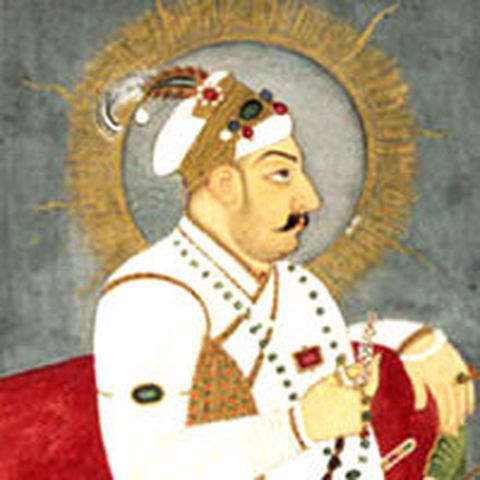
2) The "Great Table Diamond" is purchased directly by the Shah of Iran or on behalf of him, by his agents in India, such as Mir Jumla, a renowned diamond merchant of Iranian origin, based in Golconda.
Another possible way in which the "Great Table Diamond" would have reached the Iranian treasury, was either by direct purchase by the Shah of Iran, or on his behalf by his agents in India, such as the renowned diamond merchant of Iranian origin, Mir Jumla, who was based in Golconda, at the time the diamond first appeared in 1642.The possible Shas of Iran during whose period the Great Table Diamond would have entered the Iranian crown jewels, are 1) Shah Abbas II (1642-1666), 2) Shah Suleiman I (1666-1694), and Shah Sultan Husayn (1694-1722) the last Safavid ruler of Iran, who was ousted by the Afghan warrior, Mahmud.Hotaki, who not only ended the Safavid rule of Iran but also plundered the wealth of Esfahan, including the crown jewels of the former Shahs of the Safavid and other dynasties.

Mahmud Hotaki, Afghan warrior who captured Iran in 1722 and plundered the crown jewels of Safavid rulers
Which of the above two versions is the more plausible ?
Out of the two possibilities given above for the movement of the "Great Table Diamond" from India to Iran, the more plausible version is the commonly accepted first option, viz. the "Great Table Diamond" being part of the enormous loot plundered by Nadir Shah and his forces in 1739, from the Mughal treasuries in Delhi and Agra. The second version is highly unlikely, for if the Great Table Diamond had entered the Iranian treasury either during the rule of Shah Abbas II or his successors, it would not have escaped the plunder of Esfahan, including the crown jewels of the Safavid Shahs by Mahmud Hotaki of Afghanistan.
However, it is a well known fact that most of the crown jewels of the Safavid Shahs plundered by Mahmud Hotaki eventually ended up in the treasury of the Mogul emperors. This was one of the reasons that led some historians to believe, that Nadir Shah's invasion of Delhi and Agra in 1739, was actually a punitive raid for the refusal by the Mughal emperors to return the vast collection of Iranian crown jewels, plundered previously in 1722, by the Afghan warrior Mahmud Hotaki, when he invaded and captured Isfahan, ousting the last ruler of the Safavid dynasty. If we accept the second version as the more plausible version, the "Great Table Diamond" must have been among the Iranian crown jewels plundered by Mahmud Hotaki, and later entered the Mughal treasury, to be plundered again by Nadir Shah in 1739.
Hence, according to the first version, the "Great Table Diamond" first entered the Mughal treasury and was subsequently plundered by Nadir Shah, enabling its transfer to Iran. Whereas according to the second version, the "Great Table Diamond" first entered the Iranian treasury, and later the Mughal treasury, after it was plundered by Mahmud Hotaki from Isfahan. From the Mughal treasury the diamond found its way back to the Iranian treasury after it was plundered by Nadir Shah in 1739. In the first version the diamond was plundered only once, whereas in the second version the diamond was plundered on two occasions.
The Great Table Diamond that was in the treasury of Lotf Ali Khan in Shiraz fell into the hands of Agha Muhammad Khan Qajar, when the former was defeated by the latter in 1794. Agha Muhammad Khan Qajar, is also credited with re-assembling most of the lost treasures of Nadir Shah
The "Great Table Diamond" that was in the treasury of Lotf Ali Khan fell into the hands of Agha Muhammad Khan Qajar, when he defeated Lotf Ali Khan in 1794 and subdued the Zand territory. In 1796, Agha Muhammad Khan Qajar assumed the imperial diadem as Shahanshah (King of Kings), and later in the same year he captured Mash'had, the capital of the Afsharid State based in Khorasan and headed by Nadir Shah's blind grandson, Shah Rukh, who was taken prisoner and forced to surrender all the crown jewels he inherited from Nadir Shah
As Agha Muhammad Khan Qajar was not satisfied with the tally of the Afsharid's treasure declared by Shah Rukh, he subjected Shah Rukh to the most horrifying and painful torture. As the torture continued, jewels previously hidden were given up one by one. The last gem he gave up was a large ruby which had once belonged to Aurangzeb. Shah Rukh died immediately afterwards from the effects of the torture. Agha Muhammad Khan Qajar who took a lot of pains in re-assembling the lost treasurers of Nadir Shah, did not live long to enjoy his re-assembled treasurers. The very next year, in 1797, he was assassinated by his own servants, while on an expedition to Georgia.
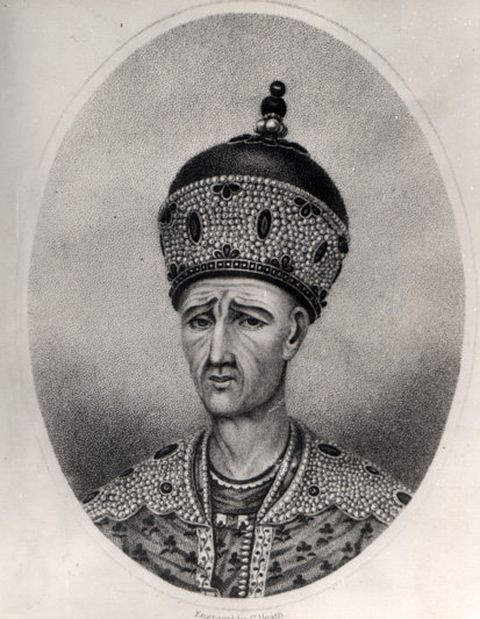
Agha Mohammed Khan Qajar (1796-1797), who not only re-united Iran but also re-assembled the lost crown jewels of Iran
Modern history
Fath Ali Shah incorporated the 186-carat Darya-i-Nur diamond and the 146-carat Taj-e-Mah diamond as the principal diamond in a pair of bracelets valued at nearly a million sterling
Agha Muhammad Khan Qajar was succeeded by his nephew Fath Ali Shah (1797-1834). Fath Ali Shah was a collector and connoisseur of valuable gemstones. It was during the reign of Fath Ali Shah, that Sir John Malcolm, the British administrator and diplomat was sent as an emissary to the Persian court, and had the privilege of an audience with the Shahanshah (king of kings), and was allowed to inspect the crown regalia, an experience he relates in his book the "Sketches of Persia" published in 1827. An extract, with his comments about the "Darya-i-Nur" and the "Taj-i-Mah" being the principal diamonds incorporated in a pair of bracelets, valued at nearly a million sterling, has already been included above under the sub-heading - "4Cs of the Diamond."
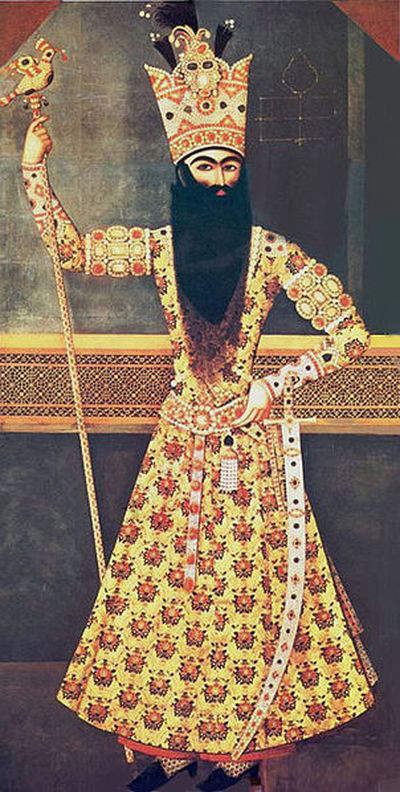
1813-portrait of Fath Ali Shah by Mir Ali

Sir John Malcolm, emissary to the Persian court, who had the privilege of inspecting the Persian crown regalia during the reign of Fath Ali Shah
Fath Ali Shah got his name engraved on one side of the Darya-i-Nur diamond. Coincidentally, the year that appears on the Persian inscription, 1834, is the year Fath Ali Shah died. Hence, it appears that Fath Ali Shah had got his name inscribed on the diamond, just before he died in 1834.
Nasser-ed-Din Shah first wore the Darya-i-Nur on an arm band, then as a brooch and later in an aigrette and finally mounted it on an elaborate frame, surrounded by 457 smaller diamonds and four rubies, a setting that is preserved up to this day
Nasser-ed-Din Shah, inherited the Darya-i-Nur in 1848. He believed that the "Darya-i-Nur" was one of the gems decorating the crown of Cyrus the Great (558-529 B.C.), and hence he often wore it on an arm band. When armbands fell from Royal fashion, he wore it as a brooch and later incorporated it in an aigrette. On occasions, the gem would be left in the care of high personages of the land, as a sign of honor. Finally, Nasser-ed-Din Shah decided to get an appropriate mount prepared for the Darya-i-Nur. When the mount was eventually completed, the Darya-i-Nur was set in an elaborate frame, which was surmounted by the lion and sun emblem of the Imperial Government of Iran. 457 smaller diamonds and four rubies were also mounted on this frame. The Darya-i-Nur remains in this same mount, which has been preserved up to this day.

Nasser-ed-Din Shah wearing a uniform studded with diamonds from the Iranian treasury. Each setting in the above uniform is a brooch. The brooch incorporating the rectangular-shaped "Darya-i-Nur" diamond was one of his favorite brooches.
Mozaffar-al-Din Shah wears the Darya-i-Nur as a hat decoration during a visit to Europe in 1903
The Darya-i-Nur diamond was then
inherited by Mozaffar-al-Din Shah, who reigned between 1896
and 1907. Mozaffar-al-Din Shah visited Europe on three
occasions. During one of those visits undertaken in 1903, he
wore the Darya-i-Nur diamond incorporated on its special
setting, surrounded by diamonds and rubies, as a hat
decoration, clearly depicted on a portrait of the Shah by
Leslie Ward in 1903.

1903-portrait of Mozaffar-al-Din Shah by Leslie Ward, depicting the Shah wearing the Darya-i-Nur diamond as a hat decoration
Mozaffar-al-Din Shah grants a new constitution to Iran in 1906 and converts the monarchy into a constitutional monarchy
In 1906, after much agitation by the population, known as the constitutional revolution, Iran was finally granted a constitution by the ruling Shah, Mozaffar-al-Din. The new constitution provided a new judicial code, a free press, and a framework for secular legislation. The power of the Royal Court. and the clergy were drastically curtailed, and more authority was placed in the hands of the Majlis (National Assembly). The first National Consultative Assembly known as the Majlis, was opened in October 1906.
Mohammed Ali Shah's attempt to suppress the National Consultative Assembly fails and the Shah takes refuge in the Russian Legation in Teheran, carrying with him the crown jewels including the "Darya-i-Nur" which were subsequently returned back to Iran
In 1907, the
new ruler Mohammed Ali Shah, tried to suppress the Majlis, with
the help of the officers of the Cossack Brigade, the Shah's
personal bodyguard and the most effective military force in the
country at that time. However, eventually the people's will
prevailed and democracy was revived in Iran in 1909, after
pro-constitution forces marched into Teheran from Azerbaijan,
deposing Mohammed Ali Shah, placing his son Ahmed Shah Qajar on
the throne and re-establishing the constitution. Mohammed Ali
Shah took refuge in the Russian Legation in Teheran, carrying
with him the Darya-i-Nur and other valuable items from the
Iranian Crown Jewels, and claimed that the jewels were his
personal property. However, after representations made to the
Russian Government by the peoples representatives, the Iranian
Crown Jewels were returned back to Iran.
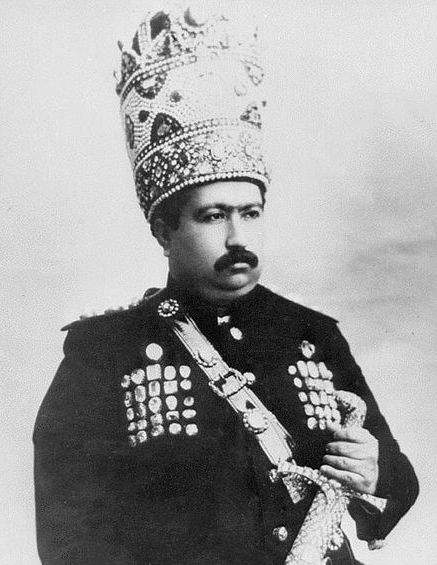
Mohammed Ali Shah, who took refuge in the Russian Legation of Teheran carrying with him the crown jewels of Iran, including the "Darya-i-Nur"

Ahmed Shah Qajar, the last Qajar Shah of Iran
Iran's experiment with democracy was short lived and ended in 1921 after Reza Khan, an officer in the Persian Cossack Brigade, staged a coup and took control of all the military forces in the country, becoming war minister and later prime minister under Ahmed Shah Qajar, and in 1925 deposing Ahmed Shah Qajar and crowning himself as Reza Shah Pahlavi
Reza Shah Pahlavi laid the foundations of a modern state in Iran, by introducing educational and judicial reforms. He also re-negotiated the oil concessions given to western countries. But, his suspicions of the British and the Russians, forced him to move closer to Nazi Germany, which resulted in the Anglo-Soviet invasion of his country in 1941, under the pretext of ensuring the safe passage of U. S. war material to the Soviet Union through Iran. The Allies forced Reza Shah to abdicate, placing his young son Mohammed Reza Shah Pahlavi on the throne.
Reza Shah Pahlavi wore the Darya-i-Nur diamond
as a decoration on his military hat during his coronation in
1926.

Reza Shah Pahlavi wearing the Darya-i-Nur diamond as a hat decoration
Iran's attempt to revive democracy after the war failed again when the democratically elected government of prime minister Mohammed Mosaddeq was overthrown in 1953 in a coup d'etat orchestrated by the British MI6 and the American CIA. Shah Mohammed Reza consolidates his position as the absolute monarch of Iran
After the war the National Front, consisting of nationalists, clerics and non-communist left-wing parties, led by Mohammed Mosaddeq, a career politician and lawyer, was elected to power, and Mosaddeq became Prime Minister in 1951. Upon his assuming office as Prime Minister, Mosaddeq nationalized the country's oil industry. Britain and the U.S. immediately swung into action and planned a joint coup to oust Mosaddeq. In August 1953, Shah Mohammed Reza fled the country after quarrels with the Prime Minister Mosaddeq came to a head. Almost simultaneously the CIA plotted coup succeeded, and Mosaddeq's Government was ousted. Within a week Shah Mohammed Reza returned to Iran and appointed a new Prime Minister. Shah Mohammed Reza then moved immediately to consolidate his position as the absolute monarch of Iran.
At a grand coronation ceremony held with great pomp and pageantry in 1967, Shah Mohammed Reza Pahlavi crowned himself as the Shahanshah (King of Kings or Emperor) and crowned his wife, Farah Diba as Shahbanoo (Empress). The "Darya-i-Nur" featured again at Shah Mohammed Reza Pahlavi's coronation.
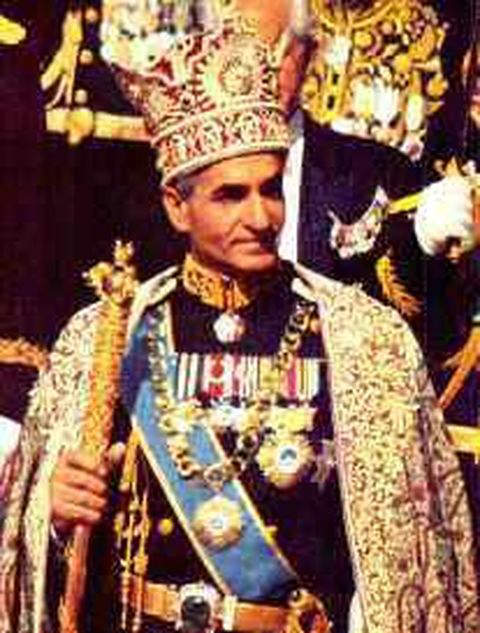
Shah Mohammed Reza Pahlavi after his coronation
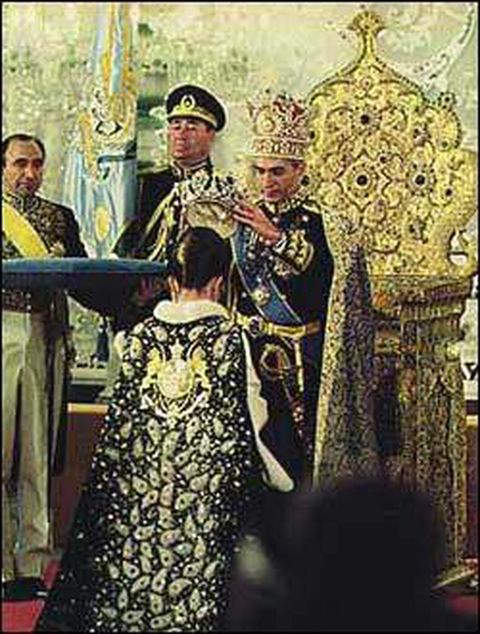
Shah Mohammed Reza Pahlavi crowning Farah Diba as Shabanoo
Research
conducted by three Canadian gemologists from the
Royal Ontario Museum in Toronto in 1966, that showed the
table-cut Darya-i-Nur diamond was in fact derived from
Tavernier's Great Table Diamond
1) "The Darya-i-Nur Diamond and the Tavernier "Great Table" " - Meen V., Tushingham A., Waite G. (1967) - Lapidary Journal, November, pp. 1000-1009
2) The Crown Jewels of Iran - (1968) Meen V. B. University of Toronto Press, Toronto.
3) "The Largest Gems of the Crown Jewels of Iran" - Meen V.B. (1969) - Gems and Gemology. Spring, Vol. XIII, Number One pp. 2-14.
1) That two large pink diamonds among the Iranian crown jewels, viz. the "Darya-i-Nur" and the "Noor-ul-Ain" diamonds, had almost identical physical characteristics, such as pale-pink color, completely pure with a high clarity grade and exceptional limpidity.
2) The similarities in physical characteristics, led to the speculation, that the two pink diamonds, the "Darya-i-Nur" and the "Nur-ul-Ain" probably originated from the same pink diamond, which was most probably the long lost, enormous, table-cut, pink diamond, known as "Diamanta Grande Table" the "Great Table Diamond" seen by Tavernier in Golconda in 1642, weighing 242 5/16 old carats equivalent to 248 3/4 modern carats.
3) The study also concluded that the weight of 176 carats for a large table-cut pale pink diamond, among Lotf Ali Khan's jewels, reported by Sir Harford Brydges, the British diplomat in 1791, actually referred to the "Great Table Diamond" and the discrepancy between the weight of 242 carats given by Tavernier and 176 carats reported by Sir Harford Brydges was actually caused by a confusion in the unit of weight used. Mirza Jaunee, the officer-in-charge of Lotf Ali Khan's treasury had probably given the weight of the diamond as 176 "mangelins," which Sir Harford Brydges inadvertently reported as 176 carats. As shown by Tavernier, a "mangelin" is equal to 1 3/8 carats and 176 "mangelins" work out to 242 old-carats.
4) The 186-carat, table-cut "Darya-i-Nur" diamond seen by Sir John Malcolm at Fath Ali Shah's court in the early 19th-century, incorporated as the principal diamond in a bracelet and subsequently reported in his 1827-publication "Sketches of Asia" is not the same table-cut diamond seen by Sir Harford Brydges in 1791, weighing 242 old-carats, but probably derived from it and with lesser dimensions.
5) That the original "Great Table Diamond" was a rough diamond crystal in cubic form, and the small angular side was a dodecahedral face.
6) That between 1791 and 1827, the "Great Table Diamond" rough crystal broke up accidentally along a cleavage plane into two unequal pieces, the larger of which was greater than 186 carats, and eventually cut and polished into the 186-carat "Darya-i-Nur" diamond, and the smaller piece greater than 60 carats, cut and polished into the 60-carat, oval-cut Nur-ul-Ain diamond.
7) That the total weight of the "Darya-i-Nur" and "Nur-ul-Ain" diamonds is 246 carats which is slightly less than the 248 modern carats of the "Great Table Diamond."
8) Having concluded that the "Darya-i-Nur" and the "Nur-ul-Ain" diamonds originated from the same pale-pink Great Table Diamond, the Canadian gemologists, calculated the dimensions of the Great Table Diamond as 56.3 x 29.5 x 12.15 mm, after an in-depth study of the dimensions of Tavernier's sketch of the "Great Table Diamond," the "Darya-i-Nur" and the "Nur-ul-Ain" diamonds, fixing the depth at the measured depth of the "Darya-i-Nur" diamond, which was 12.15 mm, and trying to get the same length-width ratio as Tavernier's sketch.
9) Based on the dimensions of 56.3 x 29.5 x 12.15 mm, the Canadian researches estimated the weight of the Great Table Diamond to be around 300 carats. The Canadian team has also attempted to explain in detail the weight discrepancies between the modern calculations and what was reported earlier by different authorities,
Summary of the fate of "Diamanta
Grande Table"
Hence, the diamond referred to as "Diamanta Grande Table" by Tavernier, entered the Iranian treasury during the period of Nadir Shah, in the same form and size, as described by Tavernier. The diamond that was with the Zand rulers and worn as an armed band, eventually became the property of the Qajar rulers. When Agha Mohammed Khan Qajar died in 1797, the Great Table Diamond was inherited by Fath Ali Shah who ruled from 1797-1834. The Great Table Diamond was last seen by Sir Harford Brydges in 1791 in the treasury of Lotf Ali Khan Zand. However, in 1827, when Sir John Malcom, visited Fath Ali Shah's court, he saw the 186-carat "Darya-i-Nur" diamond and the 146-carat "Taj-e-Mah" diamond, incorporated as the principal diamonds in a pair of bracelets, valued at nearly a million sterling. Thus, between 1791 and 1827, the Great Table Diamond had undergone an accidental or intentional cleavage into two unequal pieces, the larger of which was cut and polished into the 186-carat "Darya-i-Nur" diamond and the smaller piece became the 60-carat Nur-ul-Ain diamond. Trying to find out the Shah, during whose period this splitting-up occurred is only a matter of conjecture. It might be any one of the following rulers of Iran :- Lotf Ali Khan Zand (1789-1794), Agha Mohammed Khan Qajar (1794-1797) or Fath Ali Shah (1797-1834).
The historic "Darya-i-Nur" diamond with a 17th-century provenance, the most celebrated diamond among the Iranian Crown Jewels, is now preserved, still in its 19th-century setting, executed during the reign of Shah Nasser-ed-Din, in the Museum of the Treasury of National Iranian Jewels, in the Central Bank of Iran in Teheran.
Related :-
1) Nur-ul-Ain Diamond2) Taj-i-Mah Diamond
3) Agra Diamond
4) Taj Mahal Diamond
5) Peacock Throne as described by Tavernier
6) Emperor Aurangzeb's Collection of Pearls
7) Iranian Crown Jewels
8) Thrones
11) Jewel studded swords and shields
12) Jewel studded utility items
15) Loose precious and semi-precious stones.
External Links :-
The Great Table Diamond - www.museumdiamonds.comReferences :-
1) The Great Diamonds of the World - Edwin Streeter2) Central Bank of the Islamic Republic of Iran - Treasury of National Jewels, Collections - Darya-i-Nur - www.cbi.ir/page/2091.aspx
3) Iran Chamber Society - Iranian Museums & Galleries, Iranian National Royal Jewels - The Sea of Light Diamond "Darya-e-Noor - www.iranchamber.com
4) Travels in India - By Jean-Baptiste Tavernier, Translated by Valentine Ball
5) Ahmed Shah Qajar - From Wikipedia, the free encyclopedia
6) Mohammed Ali Shah Qajar - From Wikipedia, the free encyclopedia
7) Mozaffar al-Din Shah Qajar - From Wikipedia, the free encyclopedia
8) Nasser al-Din Shah Qajar - From Wikipedia, the free encyclopedia
9) Fath Ali Shah Qajar - From Wikipedia, the free encyclopedia
10) Agha Mohammed Khan Qajar - From Wikipedia, the free encyclopedia
11) Lotf Ali Khan - From Wikipedia, the free encyclopedia
12) Karim Khan Zand - From Wikipedia, the free encyclopedia
13) Mahmud Hotaki - From Wikipedia, the free encyclopedia
14) Muhammad Shah - From Wikipedia, the free encyclopedia
15) Mir Jumla II - From Wikipedia, the free encyclopedia
16) Sir Harford Jones-Brydges, 1st Baronet - From Wikipedia, the free encyclopedia
17) Aurangzeb - From Wikipedia, the free encyclopedia
18) Shah Jahan - From Wikipedia, the free encyclopedia
19) Reza Shah - From Wikipedia, the free encyclopedia
20) Iran Chamber Society - History of Iran - Mohammed Reza Shah Pahlavi - www.iranchamber.com
21) Mohammed Reza Pahlavi - From Wikipedia, the free encyclopedia
Powered by Ultra Secure
Amazon (USA) Cloud Network

Founder Internet Stones.COM
Register in our Forums
| Featured In
|
|
|
|
|
|
|
|


















